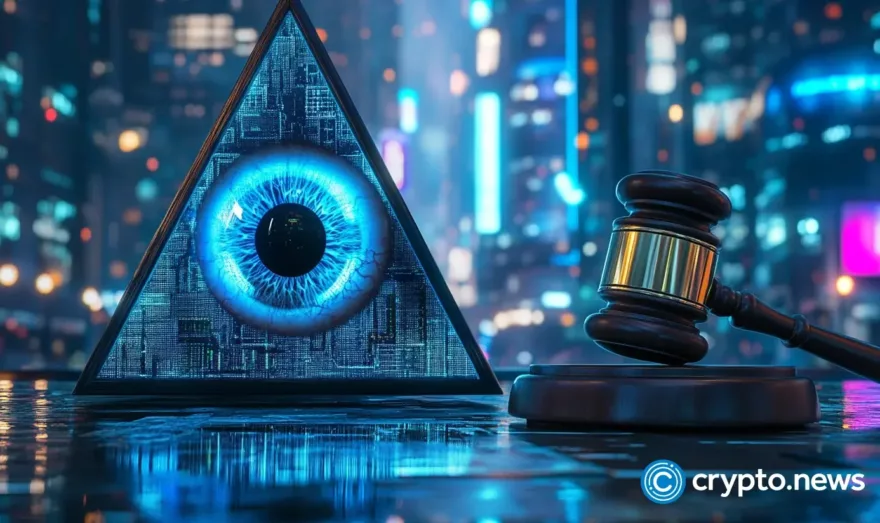Ethscriptions vs Ordinals: a deep dive into the new web3 phenomena

Ethscriptions and Ordinals may change how we interact with blockchain technology. Discover how they work and their impacts on the world of crypto.
In January 2023, the introduction of Bitcoin Ordinal Inscriptions (Ordinals) significantly impacted the web3 space. These inscriptions have already left their mark by inspiring projects to expand from Ethereum (ETH) and Solana (SOL) to Bitcoin (BTC).
Yet, hot on the heels of Ordinals’ success, a new contender has emerged: Ethscriptions. Launched by Tom Lehman, co-founder of Genius.com, Ethscriptions are rapidly gaining momentum, with over several thousand Ethscriptions generated since their June 17 debut.
Ethscriptions vs Ordinals: a whirlwind entry into Web3
Ethscriptions are digital entities that have found their home on the Ethereum blockchain. These creations leverage Ethereum’s “calldata”, enabling the inscription of non-financial data directly onto the Ethereum main chain.
This offers a more cost-effective and decentralized solution to contract storage, steering clear of the traditional norms. Even though Ethscriptions currently cater only to images, the scope for diversification in data types is immense.
The buzz around this new development has echoed through the web3 community, with many anticipating Ethscriptions to evolve similarly to their well-established counterpart, Ordinals.
Ordinals leverage Bitcoin’s smart contract transaction data to inscribe metadata into minuscule units of Bitcoin currency. This technique allows for a wide array of data types, including images and text, to be attached to the Bitcoin network, thereby extending the concept of non-fungible tokens (NFTs) to the Bitcoin ecosystem.
While Ethscriptions and Ordinals operate on different blockchain platforms and employ distinct methods, they share a unified vision. Both aspire to revolutionize the blockchain space by incorporating non-financial data directly into the fabric of their respective chains.
How Ordinals and Ethscriptions work
Ordinals and Ethscriptions employ distinct methodologies.
Ordinals use Bitcoin’s blockchain to encode diverse data types onto a satoshi, Bitcoin’s smallest divisible unit. Each satoshi carries a unique number, or “ordinal,” based on their mining order. When data such as text, images, or audio is inscribed onto them, these satoshis morph into unique digital assets. This process, known as inscription, etches information onto the blockchain, forming an immutable proof of ownership.
Marking data on the Bitcoin blockchain is akin to personalizing an item, allowing the transfer and ownership assignment of the inscribed data. In essence, ordinals function like digital stamps, providing a means to create, own, sell, and transfer your own digital assets on the Bitcoin blockchain.
On the other hand, Ethscriptions are stored at the transaction level, specifically in the calldata, a part of an Ethereum transaction that carries the data allowing sending messages or interacting with smart contracts. An Ethscription is created when an Ethereum transaction is successful and its input data, interpreted as UTF-8, forms a unique data URI (uniform resource identifier). The uniqueness of the URI is ensured by the system, eliminating duplicates. When an Ethscription is created, the recipient becomes the initial owner, and the sender is recognized as the creator.
Ethscriptions currently have data size and type limitations, supporting only images under 96 kilobytes. On the other hand, Ordinals can handle up to 4 megabytes and can accommodate text, video, or even other file types.
How to create Ethscriptions
- To generate Ethscriptions, go to the Ethscriptions.com platform. Once on the site, follow their step-by-step guide on the main page or click “Create Ethscriptions” if you prefer using an easy tool.
- Clicking on this opens a new page where you can upload an image you wish to convert into an Ethscription. But first, connect an Ethereum wallet first, like MetaMask.
- After this wallet connection, you can upload images from their computers, but these images must not exceed 96KB in size.
- Then click the “Ethscribe” button. This triggers a transaction request that must be signed off from the connected wallet. You’ve successfully generated the Ethscription!
The race to dominate the crypto ecosystem
On June 27, Ethereum facilitated over $18 million in NFT sales over the past 24 hours, showcasing its effectiveness as a bustling marketplace.
Meanwhile, Bitcoin has carved a niche in the NFT market, recording almost $5 million in NFT sales within the same period.
The arena of NFTs is not a monopoly of a single blockchain. The substantial volume of NFT sales on Bitcoin signifies the potential reshaping of its role within the digital asset ecosystem.
Simultaneously, Ethereum’s dominance emphasizes the value of these leading chains, painting an intriguing picture of a future where blockchain technology could expand beyond its traditional use cases.
Ethscriptions and Ordinals: evolution of web3 and NFTs
Ethscriptions and Ordinals may add a new layer to the dynamics of web3 and the NFT sector. These developments introduce the capacity to inscribe a variety of data onto distinct cryptocurrency units, broadening the tokenization possibilities.
Ordinals enable unique data to be inscribed onto Bitcoin’s smallest units, satoshis. This development could pave the way for new possibilities, such as creating and transferring digital collectibles, artwork, and document data on the Bitcoin blockchain, potentially creating a diverse digital assets ecosystem.
Ethscriptions, on the other hand, take advantage of Ethereum’s smart contract capabilities, transforming data into tokenized assets on the Ethereum blockchain. This function allows for a range of digital assets, including digital art, real-world assets, and subscription services, to be tokenized.
The potential widespread use of these advancements may integrate blockchain technology more deeply into our daily digital lives, possibly becoming a crucial part of the web3 future. This could lead to a more decentralized, blockchain-based internet where digital ownership is transparent and verifiable.















